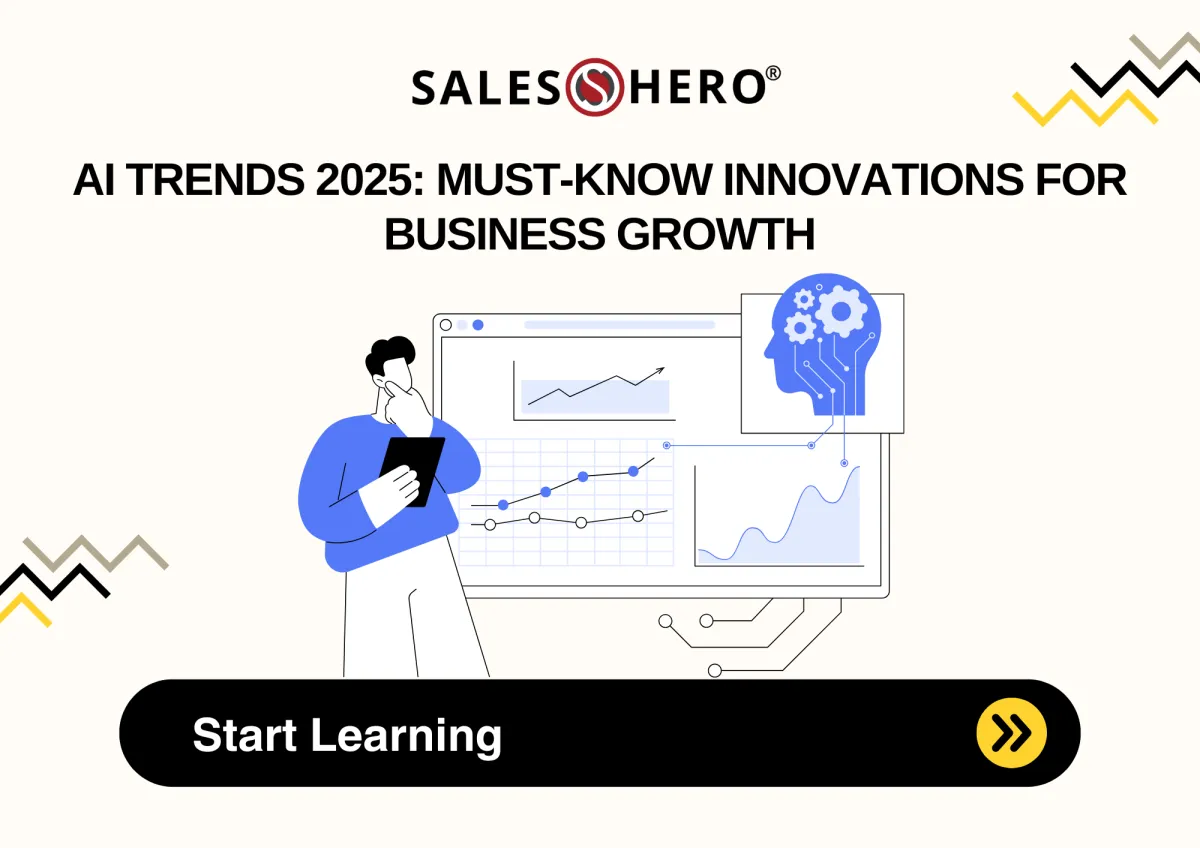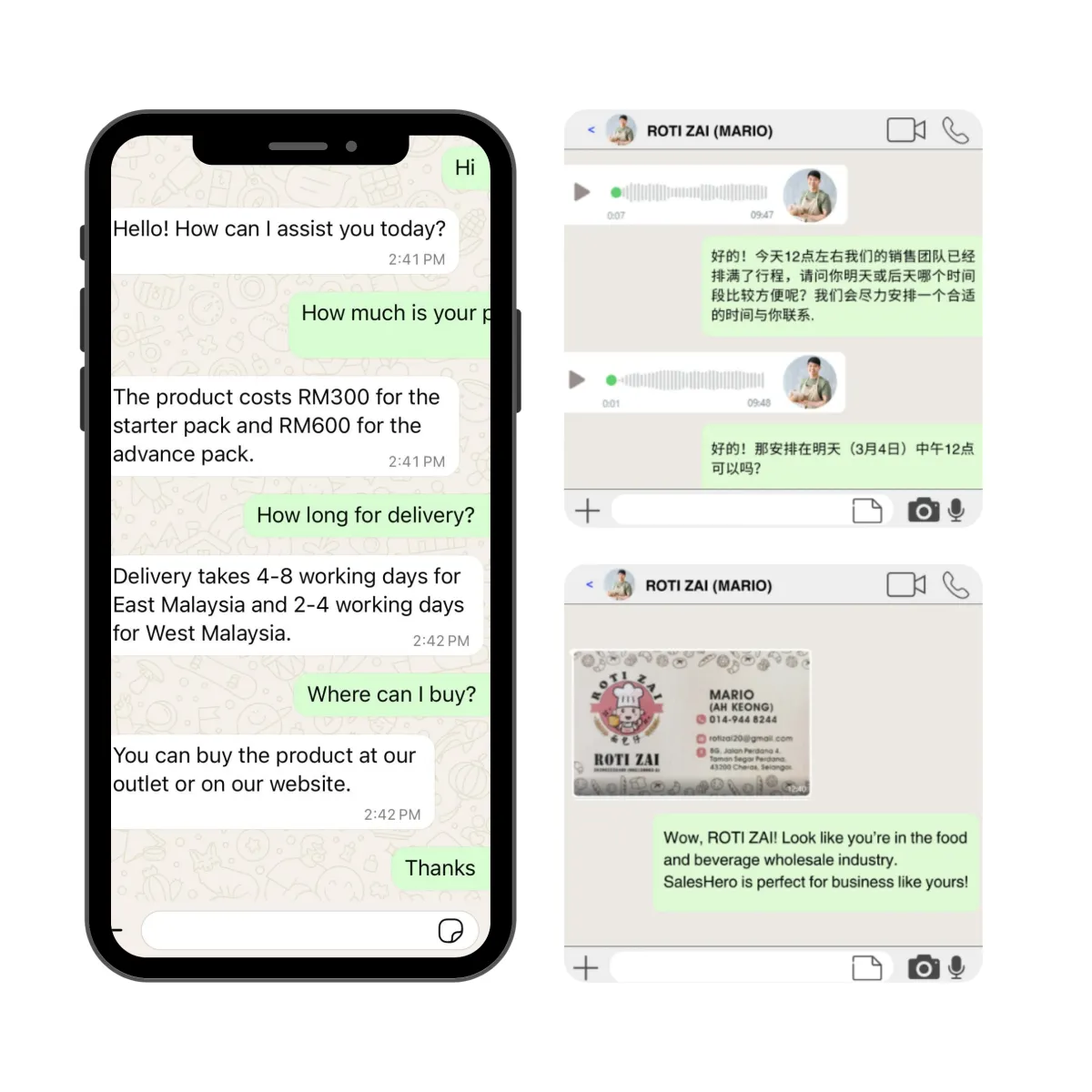
Author: Christopher Yip
Date Published: 28 April 2025
AI Trends 2025: Must-Know Innovations for Business Growth
The year 2025 marks a pivotal moment in digital transformation. Innovations once reserved for large enterprises are now accessible to small and midsize businesses (SMEs) worldwide. From generative agents that autonomously negotiate contracts to predictive analytics that forecast demand with near-perfect accuracy, AI is reshaping every facet of commerce. In markets like Malaysia with over 30 million monthly WhatsApp users - conversational AI represents the most direct route to customers. In this article, we explore seven AI trends set to drive growth in 2025, and show exactly how deploying a WhatsApp AI Chatbot can help your business capture these opportunities right away.
Key Takeaways:
✅ Agentic AI Unlocks Autonomous Workflows
✅ AI Agent Marketplaces Accelerate Deployment
✅ Multimodal AI Enables Richer Interactions
✅ Predictive & Prescriptive Analytics Drive Smarter Decisions
✅ Conversational AI on WhatsApp = Instant ROI
✅ Malaysia-Focused Implementation Steps
✅ Next Steps for SMEs
1. Generative & Agentic AI
Generative AI - powered by large language and vision models continues to explode in capability. In 2025, businesses will harness agentic AI: autonomous systems that not only generate content but also execute complex, multi-step tasks. Gartner predicts that by 2028, 33% of enterprise software will embed agentic AI, up from less than 1% today
• What it means: Instead of simply drafting marketing copy or summarizing documents, agentic AI agents will autonomously negotiate supplier contracts, optimize ad bidding strategies, and even coordinate cross-functional workflows.
• Business impact: Early adopters report up to a 40% reduction in time spent on repetitive tasks, freeing staff for high-value strategy and innovation.
• Malaysia angle: Industries such as palm-oil processing and retail can deploy agentic AI to manage supply-chain scheduling and quality control, tapping into platforms like Google Cloud’s AI agents suite, which offers turnkey solutions for agent orchestration.
2. The Rise of AI Agents Ecosystem
Closely tied to agentic AI is the emergence of AI-agent marketplaces and frameworks. Companies like Microsoft, Google, and open-source initiatives are developing ecosystems where pre-built “agents” can be customized and chained together.
• Platform examples: Google’s multi-agent orchestration (AI agents) and Microsoft’s Copilot Studio enable rapid creation of specialized agents for functions such as HR onboarding, legal review, and data analytics.
• Why it matters: Instead of one-off models, businesses can now assemble workflows - e.g., a “sales agent” that scrapes customer data, qualifies leads, and schedules demos without writing a single line of code.
• Action item: Audit your current processes to identify at least one end-to-end workflow (e.g., invoice approvals) that could be fully delegated to an AI agent.
3. Multimodal AI: Beyond Text and Images
Multimodal AI systems understand and generate across text, images, audio, and even video. As Google Cloud reports, “Unleashing the power of context” means models will answer queries based on a combination of your product catalogs, training videos, and live chat logs all at once.
• Use cases:
- Visual product search: Customers snap a photo of a garment, and the AI finds the nearest SKU in your inventory.
- Voice-activated dashboards: Sales leaders ask, “What were our top-selling SKUs last month?” and get both a spoken summary and a visual chart.
- Dynamic content creation: Marketing teams feed brand guidelines and past campaigns, then generate on-brand social media posts complete with images and hashtags.
• Malaysia tip: Leverage local datasets (e.g., Bahasa Malaysia customer reviews) to fine-tune multimodal models for regional nuance and slang, improving both accuracy and engagement.
4. Predictive & Prescriptive Analytics
Moving from descriptive dashboards to forward-looking insights, AI-driven predictive analytics forecast demand, customer churn, and even supply-chain disruptions with 85-95% accuracy.
• Key stats: McKinsey found that 72% of organizations adopted generative AI in at least one function by 2024 and predictive analytics was the fastest-growing use case.
• Applications in Malaysia:
- Retail: Dynamically adjust pricing for promotions.
- E-commerce: Optimize inventory ahead of mega-sales events (11.11, 12.12).
- Agriculture: Forecast yield for crops like palm oil and rubber, reducing waste.
• Getting started: Choose platforms with built-in, explainable ML models—this reduces the need for in-house data scientists and speeds time-to-value.
5. Conversational AI & Chatbots
While many trends require technical heavy-lifting, conversational AI is the low-hanging fruit for most SMEs—especially in Malaysia’s WhatsApp-obsessed market. According to Intuition, 92.1% of businesses saw measurable ROI from AI in 2025, with chatbots and voice assistants leading the pack.
• Why WhatsApp? Over 30 million Malaysians use WhatsApp every month, making it the ideal channel for customer engagement and lead capture.
• Core capabilities:
- Automated FAQs: Instant answers to product availability, pricing, and store hours.
- Lead qualification: Interactive menus collect customer details, segment leads, and push hot prospects to sales reps.
- Order management: Real-time status updates, payment reminders, and returns processing.
• Our solution - SalesAI:
- Easy setup: No code required; drag-and-drop flow builder.
- Multilingual: Communicate in Chinese, English or Malay.
- 24/7 coverage: Never miss an inquiry - even during public holidays.

Try SalesAI today
Automates Whatsapp messages 24/7 in a single click
Human-liked AI, support multilingual conversations (English, Chinese, Malay)
6. Hyper-Personalization at Scale
AI-powered personalization moves beyond “Dear name” inserts. By analyzing browsing behavior, purchase history, and real-time engagement, businesses can tailor offers and content in micro-segments.
• Impact metrics: Personalized email campaigns see up to 200% higher click-through rates and 15% lift in average order value.
• How to implement:
- Data unification: Centralize customer data from POS, CRM, and chat logs.
- Real-time triggers: Send abandoned-cart reminders or upsell suggestions via automated WhatsApp messages when customers show intent signals.
- A/B test creatives: Use generative models to produce multiple variants of headlines and offers, then let AI optimize for the best performer.
• Malaysia note: Incorporate local festivities such as Deepavali offers, Merdeka Day flash sales into your AI workflows to resonate culturally.
7. Low-Code/No-Code AI Platforms
Not every business has the budget for a data-science team. Low-code/no-code (LC/NC) AI platforms democratize access, letting non-technical users build chatbots, predictive models, and automation flows via intuitive interfaces.
• Benefits:
- Rapid prototyping: Launch pilots in days, not months.
- Lower TCO: Avoid hefty development and maintenance fees.
- Inclusive innovation: Empower marketing, sales, and operations teams to create their own AI solutions.
• Top picks: Look for platforms offering ASEAN compliance (e.g., PDPA), multilingual support, and pre-built connectors to popular ERPs and CRMs.
Implementing These Trends in Malaysia
Identify a High-Impact Pilot
Begin with WhatsApp, Malaysia’s top messaging channel, by deploying SalesAI to handle FAQs. Able to replies with product info, captures contact details, and notifies your sales team.
Build Team Fluency
Run a short workshop where your sales and support teams design their own conversation flows. Not only accelerates learning but also surfaces creative use cases.
Measure, Iterate, Optimize
Use sales dashboard to monitor response times and conversion rates. Spot drop-off points, adjust your flows or CTAs, and run quick A/B tests to improve results week by week. If you need a sales dashboard, feel free to try SalesHero Sales Dashboard.

Boost your sales with SalesHero's Sales Dashboard
Track performance, Optimize leads, Close more deals
Scale to New Use Cases
Once your pilot proves ROI, extend AI to appointment bookings, order management, and post-sale surveys. Next, layer in advanced features like image-based product lookup and autonomous invoice approvals, transforming into a full-service AI assistant for your entire business.
Why 2025 Will Be the Year of AI for Malaysia’s SMEs
As Malaysia's small and medium-sized enterprises (SMEs) navigate an increasingly competitive landscape, 2025 stands out as a pivotal year for the integration of Artificial Intelligence (AI). With advancements in AI technology and supportive government initiatives, SMEs are poised to harness AI's potential to drive growth and efficiency.
AI Adoption Among Malaysian SMEs
• Current Adoption Rates: Approximately 13% of Malaysian SMEs have adopted AI technologies, indicating a significant opportunity for growth and innovation in this sector.
• Market Growth: The AI in Small and Medium Business market in Malaysia was valued at $23.27 billion in 2021 and is projected to grow at a compound annual growth rate (CAGR) of 21.89% from 2022 to 2027.
• Consumer Preferences: Around 47% of Malaysian consumers prefer to interact with brands through AI, highlighting the increasing acceptance and expectation of AI-driven services.
Government Support and Investment
The Malaysian government is actively fostering AI adoption through strategic investments and initiatives:
• Budget 2025 Allocations: The government has allocated RM10 million (approximately $2.35 million USD) for the National AI Office and an additional RM50 million (approximately $11.7 million USD) for AI education, underscoring its commitment to advancing AI capabilities.
• Global Investments: Malaysia attracted $16.9 billion USD in investments from global technology giants, including Amazon Web Services, Microsoft, Google, and Oracle, to accelerate digitalization and AI adoption.
Opportunities for SMEs
AI offers numerous benefits for SMEs:
• Enhanced Efficiency: AI can automate routine tasks, allowing businesses to focus on strategic initiatives and reduce operational costs.
• Improved Customer Experience: AI-driven tools can provide personalized services, leading to higher customer satisfaction and loyalty.
• Data-Driven Decision Making: AI enables SMEs to analyze large datasets, uncover insights, and make informed decisions that drive growth.
Challenges to Overcome
Despite the promising prospects, SMEs face several challenges in adopting AI:
• Data Accessibility: Over 70% of SMEs cite a lack of AI-related data and insights as a barrier to adoption.
• Resource Constraints: Limited financial and human resources can hinder the implementation of AI solutions.
• Skill Gaps: A shortage of skilled professionals in AI and data analytics poses a challenge for SMEs aiming to leverage these technologies.
Conclusion
AI trends in 2025 are transforming how businesses operate by improving efficiency, enhancing customer experiences, and driving growth. By adopting technologies like conversational AI, predictive analytics, and multimodal interactions, businesses can automate routine tasks and focus on innovation. The key is to start small, test, and scale as you learn. Embracing these AI advancements will not only streamline operations but also help you stay ahead of the competition in an ever-evolving digital landscape. Now is the time to take action and lead with AI.
FAQs
What is Agentic AI, and how does it differ from traditional AI?
Agentic AI goes beyond content generation by autonomously executing multi-step workflows (e.g., negotiating contracts or reconciling invoices) without human intervention.
Why choose WhatsApp as your conversational AI channel?
With over 30 million Malaysian users, WhatsApp provides immediate customer access. No new app installs are required, and our SalesAI Chatbot leverages this entrenched channel to boost lead capture, automate support, and drive sales.
What ROI can I expect from deploying a WhatsApp AI Chatbot?
Clients typically see a 50–80 % reduction in support costs and 20–30 % lift in sales conversions within the first six to eight weeks.



